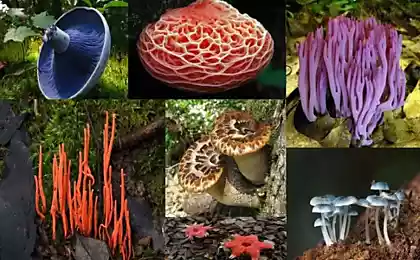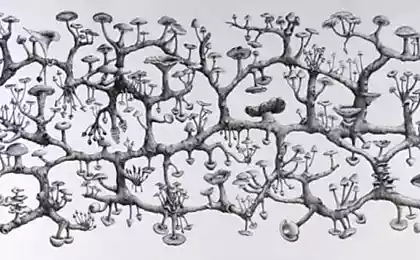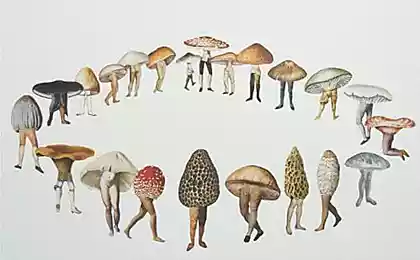562
Mushroom cloud hanging over Kiev.
via my friend))
Are you afraid of?)

2.

3.

4.

5.

Do not be afraid), it wont Cotorro natural phenomenon called convection.
Shed light on what is happening
Convective clouds.
The collection of liquid droplets and (or) ice particles formed in the vertical air flow (one or more convective cells). The reason for the formation of convective clouds is the condensation of water vapor rises and cools the air. Isolation of heat during condensation is one of the mechanisms responsible for the development of convective clouds (the warmer the air volume in relation to the environment, the more intense it pops up, which contributes to the upstream continuing condensation, etc.).
Often, the upper limit of the convective cloud crosses the isotherm 0 ° C and comes to freezing temperatures. This may involve the freezing of the water droplets and sublimation (see. Sublimation) steam. This contributes to further enhance the heat generation and upstream.
According to the degree of development of convective clouds are divided into four categories:
flat cumulus (Cu hum) they are the same - good weather cumulus clouds;
Middle cumulus (Cu med)
Powerful cumulus (Cu cong)
cumulonimbus (Cb)
With the latter usually associated most intense rainfall and the vast majority of dangerous weather phenomena (storms, squalls, thunderstorms, tornadoes).

Source:
Are you afraid of?)

2.

3.

4.

5.

Do not be afraid), it wont Cotorro natural phenomenon called convection.
Shed light on what is happening
Convective clouds.
The collection of liquid droplets and (or) ice particles formed in the vertical air flow (one or more convective cells). The reason for the formation of convective clouds is the condensation of water vapor rises and cools the air. Isolation of heat during condensation is one of the mechanisms responsible for the development of convective clouds (the warmer the air volume in relation to the environment, the more intense it pops up, which contributes to the upstream continuing condensation, etc.).
Often, the upper limit of the convective cloud crosses the isotherm 0 ° C and comes to freezing temperatures. This may involve the freezing of the water droplets and sublimation (see. Sublimation) steam. This contributes to further enhance the heat generation and upstream.
According to the degree of development of convective clouds are divided into four categories:
flat cumulus (Cu hum) they are the same - good weather cumulus clouds;
Middle cumulus (Cu med)
Powerful cumulus (Cu cong)
cumulonimbus (Cb)
With the latter usually associated most intense rainfall and the vast majority of dangerous weather phenomena (storms, squalls, thunderstorms, tornadoes).

Source:
























